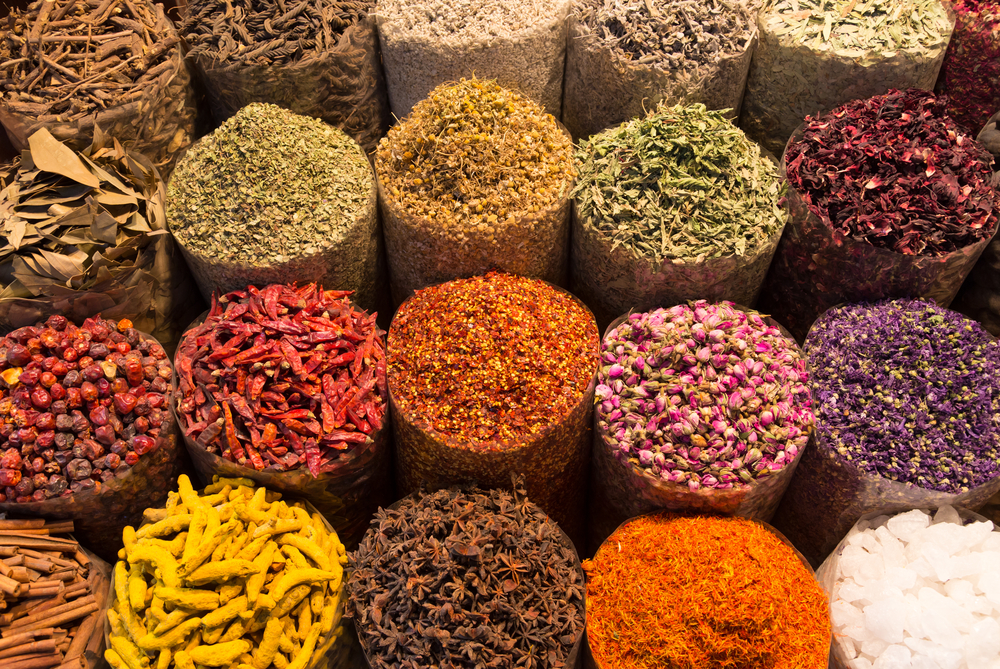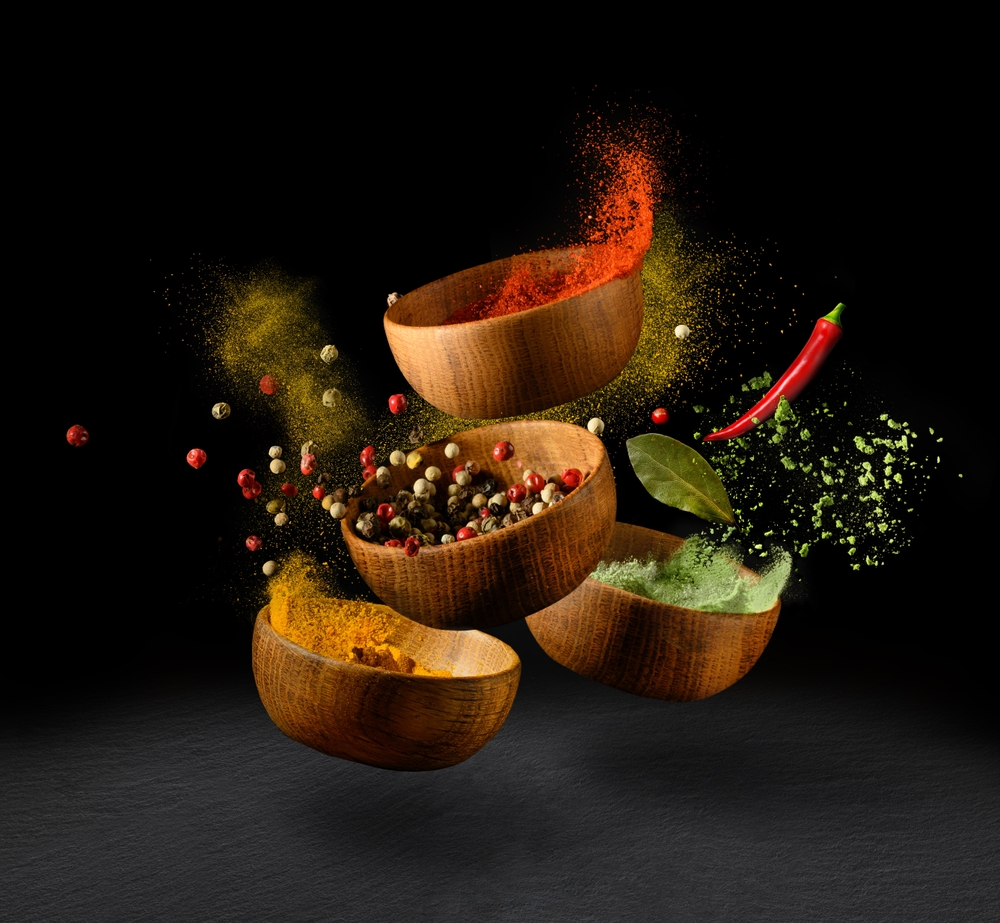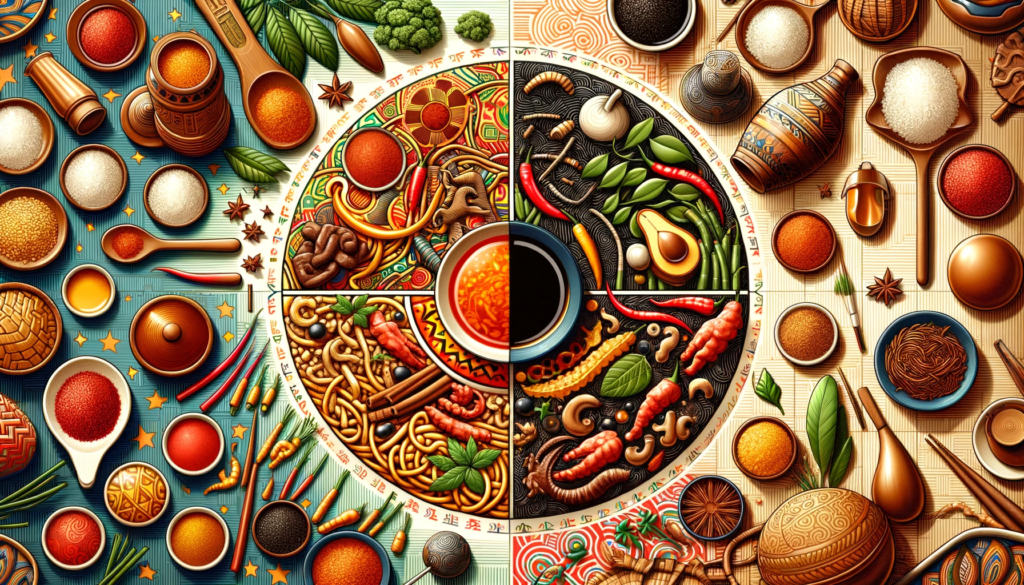Discover the vibrant fusion of African spices intermingling with the bold flavors of Asian cuisine as we embark on a gastronomic journey where the rich tapestry of flavor profiles drives innovation in the culinary world. Culinary fusion, once a trend, is now a mainstay in our food culture, challenging the taste buds to experience the captivating combination of the earthy and smoky to the fiery and intense spices. Join us as we unveil the secrets of blending African spices into classic Asian dishes, injecting new life into time-honored recipes, and charting the future where these worlds of flavor continually collide to create dynamic, delicious dishes.
Introduction to the Fusion of African and Asian Flavors
The gastronomic interlace of African and Asian flavors is more than just the cross-contamination of regional spices— it represents a cross-cultural exchange that has been evolving over centuries. African spices bring a unique warmth and depth to the already vibrant and diverse palette of Asian cuisine. This relationship sees a refreshing emergence of taste sensations that indulge and respect traditional elements while creating exciting new culinary expressions. Get ready to traverse an eclectic mix of flavors that promise to captivate your senses.
The Growing Trend of Culinary Fusion Between Africa and Asia
In recent years, a burgeoning interest in global flavors and authentic cooking experiences has seen African and Asian culinary techniques merge. Chefs and home cooks alike are increasingly infusing African spices into Asian dishes, resulting in a novel and exquisite taste experience. This growth in fusion cuisine brings to light the complementary nature of African heat and Asian umami, creating an electrifying and exotic new world of flavors that are at once familiar yet thrillingly different.

African Spices Making Their Mark in Asian Cuisine
Popular African Spices Used in Asian Cooking
African spices have found a warm welcome in kitchens mastering Asian cuisine. Spices like Berbere, a hot spice blend from Ethiopia, and Ras el Hanout from North Africa have added depth and allure to traditional Asian recipes. Other unique flavors, such as the fiery Harissa and the versatile spice mix Suya from West Africa, are now staple ingredients that contribute their boldness to Asian culinary practices, striking a vividly flavorful note in every dish they grace.
Historical and Cultural Connections Between the Two Cuisines
The weaving of African and Asian cuisines is also the weaving of their histories. Early spice trade routes facilitated not only the exchange of goods but also of culinary traditions. Over time, traders and immigrants introduced their characteristic spices to different regions, naturally leading to the blending of flavors we see today. Culinary fusion honors these ancient bonds, celebrating the global narrative of connectedness and shared love for rich, aromatic flavors. This fusion is a testament to the enduring power of food as a universal language.
Innovative Recipes: African Spices in Asian Dishes
Berbere-Infused Curry
Imagine the robust warmth of a classic Asian curry emboldened with the fiery kick of Berbere. This Ethiopian spice blend brings together chili peppers, garlic, ginger, and a medley of aromatic herbs, lending an unexpected twist to the curry’s depth of flavor. Such innovative recipes highlight the seamless integration of African spices into Asian cuisine, redefining comfort food and offering a unique, memorable culinary experience.
Harissa-Spiced Stir Fry
A stir fry dazzles with its versatility and ability to carry bold flavors, and when Harissa joins the pan, it results in a tantalizing dance of heat and savory notes. This Tunisian hot chili pepper paste is not merely about spice; it’s packed with flavor that includes smoky aromatics and hints of cumin and coriander. Melded with the freshness of crisp Asian vegetables and the succulence of stir-fried meats or tofu, it exemplifies the art of fusion cooking.
Ras el Hanout in Asian Noodle Dishes
Ras el Hanout, often referred to as the “top of the shop,” is a North African spice mix that boasts a complex blend of flavors ranging from floral to spicy. When graced upon Asian noodles, its presence transforms the humble dish into an aromatic treasure trove of comfort and surprise. Strands of noodles enrobed with this Moroccan spice mix, alongside vegetables and proteins, create an epicurean delight that truly embodies the essence of African-Asian culinary fusion.
Suya-Spiced Asian BBQ
The distinct taste of Suya—an earthy and nutty West African spice blend—melds seamlessly with the smoky, savory flavors of Asian barbecues. Its key ingredients, such as ground peanuts and powdered chili peppers, add dimension and a subtle crunch to the charred succulence of grilled meats. Whether applied as a dry rub or a marinade, Suya spice infuses Asian BBQ staples with an exciting punch of flavor, elevating them to new gastronomic heights.

Techniques for Blending African Spices with Asian Ingredients
Balancing Flavors and Techniques
To successfully marry African spices with Asian ingredients, one must understand the delicate art of flavor balance. It’s about creating harmony between bold spices and subtle nuances native to both culinary worlds. The techniques involve layering spices to build complex profiles where no single flavor overwhelms but rather, complement one another. Understanding the thermal nature of spices—some warming, some cooling—also plays a critical role in achieving the perfect symphony of flavors suited to Asian dishes.
Tips for Marrying Spices with Traditional Asian Cooking Methods
The integration of African spices into the traditional cooking methods of Asia requires know-how and intuition. For instance, spices can be tempered in oil to release their volatile compounds before being introduced to other ingredients. Stir-frying, braising, and steaming, commonplace in Asian cookery, can all be skillfully adapted to accommodate the rich flavors of African spices. Experimentation and an open-minded approach are the keys to creating dishes that celebrate the diversity and richness of both cultures.
The Art of Creating Fusion Spice Blends
Crafting Custom Blends for Unique Flavor Profiles
The ingenuity of fusion cuisine can be captured in a bottle—through the crafting of custom spice blends that encapsulate the nuances of African and Asian flavors. Curating a unique blend is akin to painting with spices, each pinch adding a stroke of color to the canvas. Whether it’s merging the heat from an African spice with the tanginess of an Asian counterpart or combining a floral note with an umami undertone, these custom mixes are the heart of the fusion kitchen and the gateway to an endless array of taste possibilities.
Examples of Fusion Spice Mixes and Their Uses
Fusion spice mixes can offer adventurous twists to classic dishes. Imagine a five-spice Suya blend, uniting the nutty flavors of Nigeria with the sweet and aromatic nuances of Chinese five-spice. Or a Harissa Garam Masala that melds South Asian warmth with North African heat. These hybrid creations are not just inventive; they provide a quick and accessible way to experiment with new dishes, giving home cooks and chefs alike the ability to dip their toes into the expansive world of flavor fusion.

Pairing African-Spiced Asian Dishes with Beverages
Selecting Drinks to Complement Bold Flavors
The complexity of African-spiced Asian dishes demands thoughtful beverage pairings to enhance the culinary experience. Rich and spicy dishes, for example, may be balanced with the sweetness of a Riesling or the crispness of a Saison beer. A light-bodied Pinot noir or refreshing green tea could provide the perfect accompaniment for more subtle flavors. The aim is to select drinks that mirror or contrast flavors without overpowering the dish, resulting in a harmonious dining experience.
The Future of African-Asian Culinary Fusion
Emerging Trends and Potential New Flavor Combinations
The future of African-Asian culinary fusion is bright with possibilities as new generations of culinary enthusiasts embrace and drive innovation. The rising popularity of veganism and sustainability concerns are spurring the discovery of plant-based fusions, while nutritionally conscious cooks experiment with superfoods from both continents. As the global village grows closer, we can anticipate an even greater exchange of culinary ideas, with chefs and home cooks alike celebrating shared humanity through delicious, unifying flavors.
FAQs on African Spices in Asian Cuisine
What Are Essential African Spices for Asian Fusion Cooking?
Embarking on African and Asian fusion cooking begins with stocking essential spices. Berbere, Ras el Hanout, and Harissa paste are foundational for their rich and varied flavor profiles. With its nutty and spicy flavor, Suya seasoning also provides a unique touch to Asian fusion dishes. These spices are versatile and can be used across a multitude of recipes, from marinades to finishing touches.
How Can I Substitute Traditional Herbs with Fusion Counterparts?
Substituting traditional herbs with African spices can add a delightful twist to your dishes. Consider replacing some common Asian seasonings like ginger or lemongrass with Ethiopian cardamom, known as Korarima, for a bolder flavor. You can also try using grains of paradise (a West African spice) instead of black pepper to introduce a peppery zest with hints of citrus in your dishes. Start with small amounts and adjust to taste.
What Are Some Easy Dishes for Someone New to Fusion Cooking?
For those new to fusion cooking, starting with simple recipes can help ease the process. Try incorporating African spices into familiar Asian dishes such as a Berbere-spiced fried rice or a Harissa-flavored ramen. These dishes offer flexibility and forgiving canvases for experimenting with new spice combinations. As confidence builds, you can graduate to creating more intricate fusion recipes like Moroccan-spiced sushi rolls or Tanzanian flavored Bao buns.
Where Can I Find African Spices for My Asian Fusion Recipes?
African spices can often be found at specialty grocery stores, international markets, or through online spice retailers. Look for shops that focus on African or Middle Eastern ingredients as they’ll likely carry a range of spices suitable for Asian fusion cooking. Some Asian supermarkets may also stock African spices due to the rising popularity of fusion cuisine. Don’t hesitate to ask staff for recommendations on the freshest spices available.
How Do I Balance the Intensity of African Spices in My Dishes?
Balancing the intensity of African spices is key to a successful fusion dish. Start by adding small amounts of spice to your dish and taste frequently. Pair robust spices with milder ingredients like coconut milk or citrus to soften their impact. Also, considering the cooking method can help; slow cooking can mellow strong spices, while quick-cooking methods like stir-frying will maintain their potency. Understanding and respecting the power of these spices will help achieve the perfect flavor balance.
